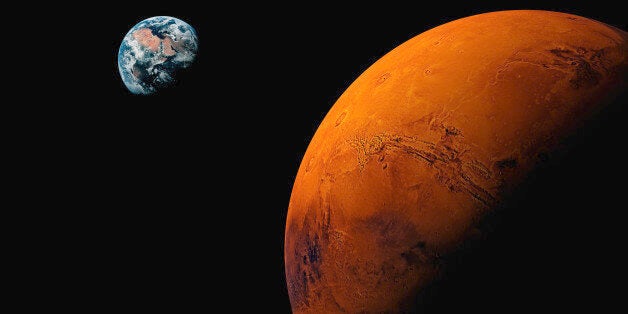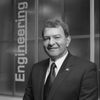
While there has been much concern about innovation in the United States, engineering is often undervalued. So kids are more likely to dream of being sports stars and rock musicians than engineers. But without exciting role models, students are unlikely to pursue the field. To inspire the next generation of inventors, we need heroes who are engineers. Astronaut Mark Watney -- played by Matt Damon in director Ridley Scott's epic 3-D film, The Martian, released October 2 -- is a great example. Marooned on the lethal Red Planet, this plucky astronaut with engineering skills figures out how to make water, grow food, and restore communication with NASA to survive. So far, audiences love him. In fact, The Boston Globe called the film a "great recruitment tool for the STEM fields" because it "makes knowing stuff seem attractive, cool, even sexy." Coinciding with all the excitement about the film, recent findings from NASA's Mars Reconnaissance Orbiter offer the strongest evidence yet that liquid water flows on Mars today. Also, right now, NASA is testing how long-term isolation and confinement may affect six astronauts living inside a 1,000-square-foot dome on a Hawaiian volcano in conditions as harshly Martian as possible. At the same time, aboard the International Space Station astronaut Scott Kelly is participating in a study with his astronaut twin brother Mark of differences between living in space and on Earth. Isn't it time for a new Sputnik moment? The Soviet Union's launch of Sputnik I October 4, 1957, set off the space race, woke us up to the importance of science and technology, and led to the creation of the National Aeronautics and Space Administration (NASA). Sputnik spurred American engineers and scientists to land Neil Armstrong on the moon July 20, 1969. And, when NASA rovers, Spirit and Opportunity, landed on Mars in 2004 to investigate whether its hostile environment could ever have supported life, engineers and scientists at NASA's Jet Propulsion Laboratory went wild. NASA's Curiosity, launched in 2012, is still beaming images and data back to Earth. But plans to build the Ares I and Ares V boosters for a return to the moon and trip to Mars were abandoned. Unfortunately, the Program for International Student Assessments (PISA) places U.S. students raw scores in math and science in the lower percentile, while Finland, South Korea, Japan and Estonia are near the top. Now is the time to elevate engineering as key to innovation. Innovations developed by NASA engineers and astronauts have changed our lives -- from technologies improving kidney dialysis, voice-controlled wheel chairs and lifesaving heart pumps to computer programs that monitor air quality, flat-screen televisions, shock-absorbing running shoes, lightweight oxygen tanks used by firefighters, and freeze-dried food. To prepare the next generation of scientists and engineers, I believe that introducing students early to engineering will challenge them to apply their math and science knowledge to solve real problems. Children practically emerge from the womb fascinated by making things. Engaging them in engineering skills -- identifying the challenge, proposing a solution, testing, and improving the design -- is at the heart of creating the new technologies that enhance our lives. We must fund engineering education at all levels and advocate for engineering in learning standards and assessments. Also, lively, relevant engineering curricula, teacher professional development, and lifelong programs in schools and museums nationwide are critical. We must make engineering cool enough to motivate kids to want to land on Mars. While we can't all be Sally Ride or John Glenn, we can learn enough about engineering to thrive in our complex technological world. Let's make the Orion spacecraft, designed to take humans into deep space, a real first step toward Mars. Ioannis Miaoulis, PhD, is president and director of the Museum of Science, Boston and former dean of Tufts School of Engineering. He has served on NASA's Advisory Council and is on the Center for the Advancement of Science in Space (CASIS) Board.
